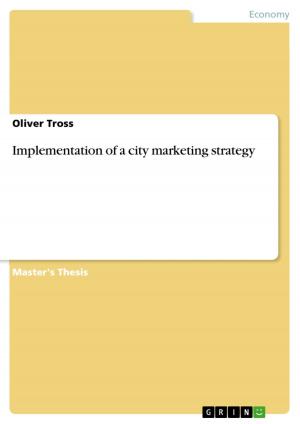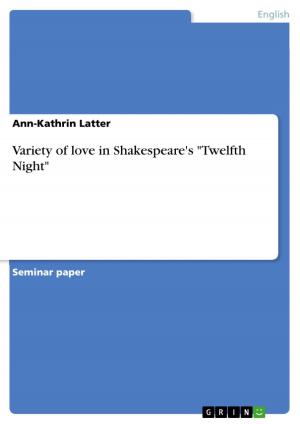Myths and Symbols in J.K. Rowling´s Harry Potter and the Philosopher´s Stone
Fiction & Literature, Literary Theory & Criticism, British| Author: | Volker Geyer | ISBN: | 9783638117449 |
| Publisher: | GRIN Publishing | Publication: | March 23, 2002 |
| Imprint: | GRIN Publishing | Language: | English |
| Author: | Volker Geyer |
| ISBN: | 9783638117449 |
| Publisher: | GRIN Publishing |
| Publication: | March 23, 2002 |
| Imprint: | GRIN Publishing |
| Language: | English |
Seminar paper from the year 2001 in the subject English Language and Literature Studies - Literature, grade: very good, University of Erfurt (Anglistics/ American Studies), 7 entries in the bibliography, language: English, abstract: 1. Introduction It's beyond doubt that J.K. Rowling's Harry Potter books are one of the biggest surprise and success in literature history. They influenced the youths' reading habits in a never known way. What is this great success founded on? This question can't be answered sweepingly. The reasons are many-sided. In my opinion, an important reason is the combination of the youths' real world with the fantastic and mystic world. The youths find their real experiences at school, with parents, friends and enemies combined with a realm of witchcraft, symbols superhuman skills and dangerous adventures. But a lot of youths know a big part of the mystic world, too. Subconsciously the old fairy tales and legends are waked up again. And so the fascination from childhood days is swinging in the background while reading Harry Potter. The youth find again well-known symbols and myths, e.g. mystic numbers, ghosts, struggle between good and evil, transformation and invisibility, animals like dragons, owls, rats and mystic places like a dark wood, an old hut, secret passageways etc. But they discover or learn about new aspects of the mystic world by reading Harry Potter, e.g. the wish for never ending life, the philosopher's stone, desire and craving, meaning of unicorn or the search for wisdom. They get new experiences and see some new aspects of their own life. These delicate net of myths and symbols woven in the books make they very exiting for adults, too. Besides some new ideas, there are a lot of traditional symbols and myths with different origins and meanings. In this paper I am describing only the most important symbols and myths. I am going to explain the general meaning from history and the specific meaning in Harry Potter and the Philosopher's Stone. [...]
Seminar paper from the year 2001 in the subject English Language and Literature Studies - Literature, grade: very good, University of Erfurt (Anglistics/ American Studies), 7 entries in the bibliography, language: English, abstract: 1. Introduction It's beyond doubt that J.K. Rowling's Harry Potter books are one of the biggest surprise and success in literature history. They influenced the youths' reading habits in a never known way. What is this great success founded on? This question can't be answered sweepingly. The reasons are many-sided. In my opinion, an important reason is the combination of the youths' real world with the fantastic and mystic world. The youths find their real experiences at school, with parents, friends and enemies combined with a realm of witchcraft, symbols superhuman skills and dangerous adventures. But a lot of youths know a big part of the mystic world, too. Subconsciously the old fairy tales and legends are waked up again. And so the fascination from childhood days is swinging in the background while reading Harry Potter. The youth find again well-known symbols and myths, e.g. mystic numbers, ghosts, struggle between good and evil, transformation and invisibility, animals like dragons, owls, rats and mystic places like a dark wood, an old hut, secret passageways etc. But they discover or learn about new aspects of the mystic world by reading Harry Potter, e.g. the wish for never ending life, the philosopher's stone, desire and craving, meaning of unicorn or the search for wisdom. They get new experiences and see some new aspects of their own life. These delicate net of myths and symbols woven in the books make they very exiting for adults, too. Besides some new ideas, there are a lot of traditional symbols and myths with different origins and meanings. In this paper I am describing only the most important symbols and myths. I am going to explain the general meaning from history and the specific meaning in Harry Potter and the Philosopher's Stone. [...]















